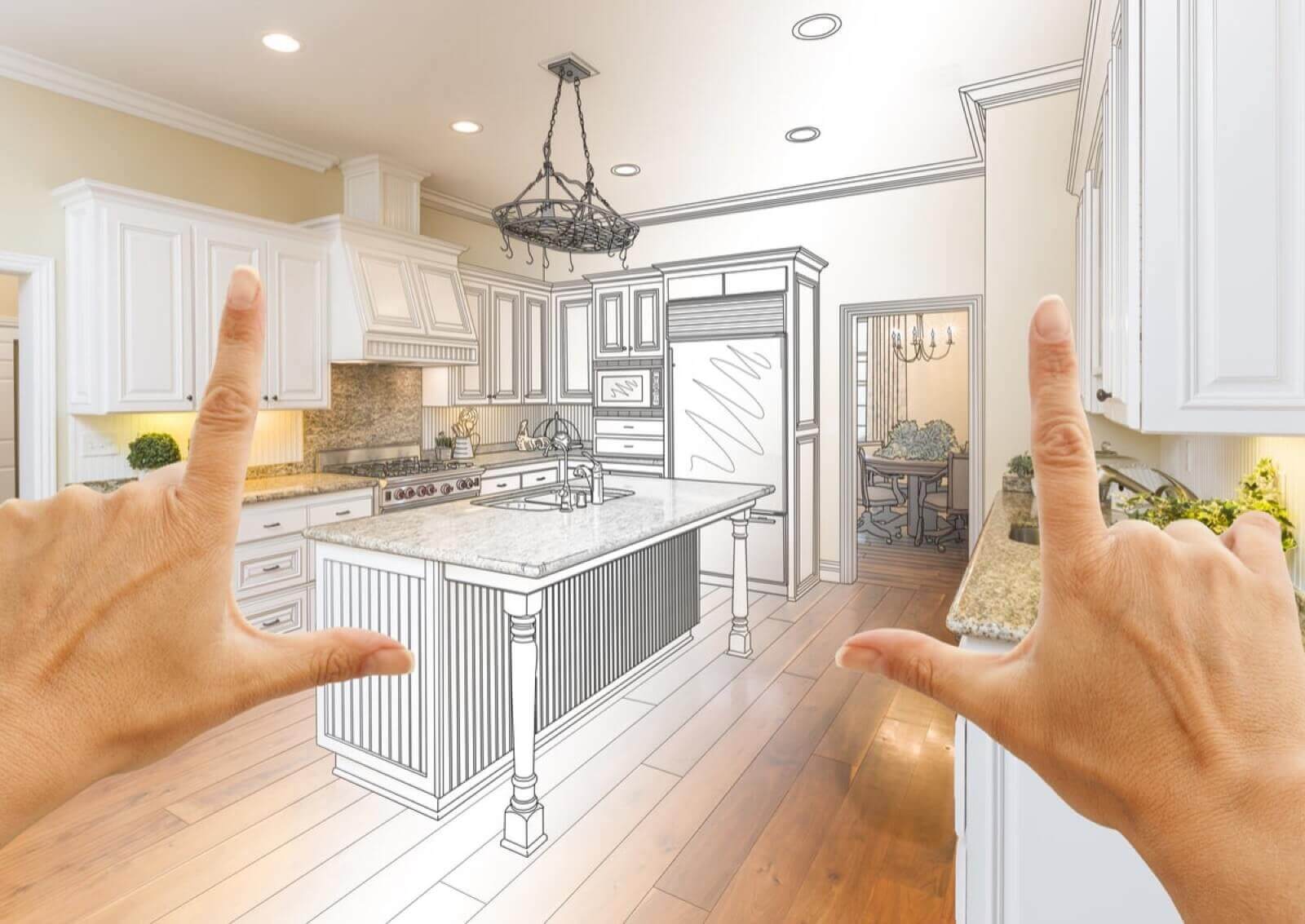There are many reasons for doing home renovations. Some would do it for changing spaces that are no longer efficient to serve specific functions which may be personal. Renovations take time so careful planning is necessary. One of the things one needs to consider is the budget. With the mounting costs of building materials, one is expected to shell out much if you want your home renovation or improvement to be a success.
Another general truth about renovation is that every small thing adds up. One crucial consideration in every home improvement is deciding whether to demolish the whole house or just a portion of it and start from scratch.
The projects can run from the simplest to the most complex. Examples can be floor retiling, doing additional bedroom cabinets, or perhaps, an extension for the kitchen or an upgrade of the bathroom. In many other ways, renovation is quite similar to “customizing.” Some do renovations according to taste or need. As we spend our hard-earned money to improve or beautify our spaces, careful planning along with budget allocation are top priorities. Before you plunge into the project, you want the activity to be stress-free from start to finish.
One seasoned renovator has this suggestion of completing everything at the same time if you can afford it. This means moving out of the house then hiring both a good architect and an experienced contractor. But for most people, it is the other way around, that is, do everything step-by-step and make small, incremental changes. This makes it more feasible. One will be able to have time to reflect if what you did (or doing) was right. Depending on the start-up costs for the project, doing it gradually may turn out to be more expensive.
If you decide either to go full-blast or in phases, keep in mind these tips so you will end up saving and not breaking your bank:
1. Have a plan and stick to it.
It all boils down to having a master plan right from the start. It is a given that most of the building materials’ costs like wood and paint are soaring so you need to allocate a budget for them. As you proceed with the renovation project, ensure that there’ll be no construction impediments. What will blow your budget is to stray away from the original plan. We know that there can be surprises so brace yourself – be diligent. The best thing to do is stick to your plan and execute it well.
The first step is to visualize what you need to do. How do you want the house to look like once the renovation is completed? You need to list down all the scope of works and estimate the costs accordingly. Check your priorities and break down all the manageable details. Proceed with timelines. As a tip – when you break the plan, go with the dirty work first like plumbing, electricals, structural and demolition works. The others should be done last like finishes and painting jobs.
2. Do it by section.
If you are doing renovations for adjoining spaces like the living room-dining room, or dining room-kitchen, do the work by components like floors, walls, or ceilings. It is much better to renovate one section fully instead of going full-blast with the work in all rooms together at the same time. Ensure one room is completed before doing other spaces. Once a new room is made as new, this area along with the other finished sections can be used while the work is still ongoing.
3. Find and keep the good workers.
What’s the best way to find good workers? One foolproof way is through referrals. If any of your family, relatives, or friends have good experience dealing with such workers, chances are they will do the same for you. Check these workers and guide them to be more efficient. You can remind them about being organized and systematic. Make them aware of the process you want things to be done like laying out all materials, doing all the pre-work like measuring, and cutting, and so on. Tell them also how you want the new room or space to look like. Make sure that you direct the workers on how you envision the completed spaces should be. If you can have a detailed diagram to provide the workers, it will turn out much better so you know you are on the same page and every detail is understood. This will avoid problems later on that can delay or hamper the completion of the work.
4. Pay as jobs are done, not on a per-day basis.
You can pay your workers based on what works they’ve done as per plan and not per day. That’s why you need to set and define the length of days/weeks and scope of works in the contract before starting on the renovation project. Of course, if for no reason the workers have exceeded the period agreed upon, the homeowner should deduct a corresponding amount from the bill. You can give 20-30% of the contract amount at the start of the project and then pay continuously as the work is being completed. Up to the last day, you and the foreman or project manager can do a final walkthrough and pay the remaining balance once you’ve checked that 100% is done as planned. Be sure the work completed has met all your expectations. Better if you can check the work while it is ongoing, maybe daily or a few times each week so you can cut off any flaws at once. Or you may ask for daily/weekly meetings for updates from the lead person to avoid problems before they even crop up. Lengthening the completion certainly can take a toll on you as the homeowner, both physically and financially.
5. Purchase building materials ahead of time.
This means spending on materials little by little vs. doing it in just one trip to the hardware store. Maybe allot about 15-20% of your monthly income for this purpose. If you have complete materials on hand, the workers in your renovation project can work without interruptions, thereby making them finish the work on time. Just ensure though that the materials you bought will be stored properly in a safe, dry place. If you have a storage room or an empty corner outside your house, this is an ideal spot. In addition, you can even save up more on delivery fees for the materials by picking up the items yourself from the store.
6. Do not use labor-intensive materials.
Having more labor-intensive materials will take up much of your time. Research and think of easier ways like using a ceramic tile adhesive for floor retiling instead of demolishing all the existing cement tiles and installing the new ones on top of them using the adhesive. The tile adhesive has a faster setting than a cement mortar. You can save on labor costs by not carving out the cement tiles. Also, you won’t wait too long before you can step on the new floors. If you use the adhesive, you can step on the floors after maybe 30 minutes, at the least.
7. Recycle.
It pays to recycle stuff to save on costs. What are the items in the house that are ideal for recycling? These can be doors, windows, some wood or metal components, and plumbing fixtures. Just instruct your workers that these should be carefully handled during the construction phase so as not to incur damages, thus, defeating the purpose.
8. Make DIY small projects for your interiors.
Aside from recycling, you can engage in DIY projects for some of your home’s interiors. Do you want to make it more eco-friendly? Your creativity skills can be put into action. For example, if you have a beach house - try switching to energy-efficient light bulbs. One project you can do is to make attractive lanterns with an ocean vibe or seaside feels. They would look lovely on your balcony or garden. They should match your house’s color scheme though. You may want to try on other small projects, too, around the house – check what else you can do and go ahead. These projects are not only less expensive but they also show a part of your personality in your home.
9. Rent equipment.
You can go out and explore the hardware sections of some Home Depot stores for ways to make the construction work more efficient. What particular tools or equipment you should rent? A circular saw for doing woodcutting for a bedroom renovation or a tile cutter for floor retiling to avoid wastage are some examples of equipment you shouldn’t buy and just rent out.
10. Learn from experience.
As you do your renovation projects, you can easily grasp and learn the terms or the materials used by the builders or contractors. For instance, you know how wood measurements are called or maybe what nuts and bolts are needed for a specific element of the house. You gain knowledge and confidence over time so this is helpful. Home improvement remains a continuing project that will get easier for you to handle based on what you’ve experienced so far so make the most out of it.
With the right strategy on the design, timing, budget, and materials – you can cut costs on your home renovations without cutting corners. We’ve shared with you some tips so you can take your time and enjoy yourself throughout the process.
If you are trying to sell your house or apartment, Broker One can help. Click
here for more info.







